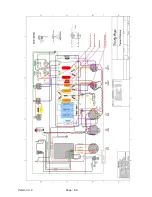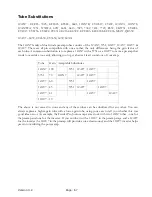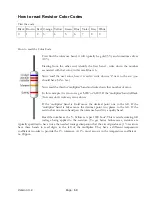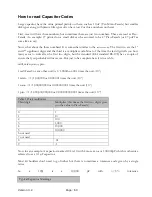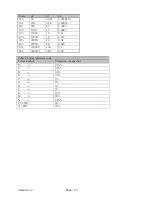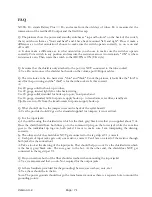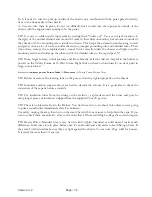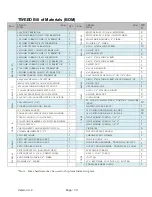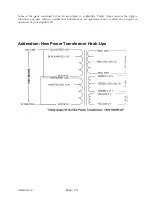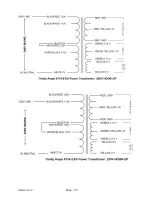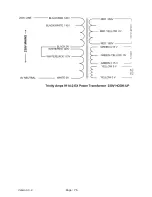
Version 3.2
Page: 61
•
Is the Speaker cable rattling against back of chassis? Hold it & listen. Tie it down if necessary.
Loosen the chassis from the cabinet and see if the buzz goes away. This will isolate the chassis as the
problem. If it does go away, Test the chassis mechanics.
Testing Chassis Mechanics
•
Are all the nuts fastening parts to the chassis tight? (sockets, transformers, tag strips etc.).
•
Are there Shields on pre-amp tubes? Remove & listen.
•
Are there Spring retainers on power and rectifier tubes? Remove them or temporarily tie them
down somehow & listen. Cover in heat resistant tubing if necessary to isolate them from the
tubes; or remove them; or you can retain tubes with a small amount of silicone.
•
Are the tubes mechanically rattling? Hold them and see if the rattle goes away. Replace if
necessary.
•
Are the Controls loose? (toggles/mounting rings etc.)
•
Is the Chassis loose? - tighten & listen
•
Is the Chassis loose against backboard? - Remove backboard & listen
•
Is the Chassis pushed up hard against cabinet
? Tighten; Use Rubber gasket (neoprene 3/8’ X
1/8’ window/door sealer) around where the chassis touches the cabinet
•
Is there a gap between panels/chassis & cabinet? Tighten it up, use rubber gasket where the
faceplate meets cabinet. Rubber gasket (neopren
e 3/8’ X 1/8’ window/door sealer) between
panel and cabinet
•
Is the Chassis vibrating around backboard? Remove the backboard and listen. Use a Vibration
damping strip or rubber gasket between chassis and backboard.
•
Is the Chassis vibrating around the tranny? Hold tranny & listen; Are there washers between
tranny & chassis. Flush mounting (i.e. no washers) could cause rattle. Use rubber gasket
between transformer or use washers
•
Is the Circuit board mounted tightly against chassis? Tighten mounting screws - check
standoffs.
•
Are there components touching the eyelet board? Use a chopstick to prod some of the larger
ones first, then space them off the board; You can even silicone the rattling parts to board if
necessary (especially larger caps).
•
Are there Components touching each other? Use a chopstick to prod some of the larger ones
first, then separate them; Silicone the rattling parts to separate them (especially larger caps)
Summary of Contents for Trinity Tweed Amp
Page 2: ...Version 3 2 Page 2 ...
Page 16: ......
Page 20: ...Version 3 2 Page 20 Input Jack Theory from 18watt com ...
Page 25: ...Version 3 2 Page 25 ...
Page 49: ...Version 3 2 Page 49 ...
Page 65: ...Version 3 2 Page 65 HEYBOER OT for TWEED 6L6GT CONVERSION ...
Page 66: ...Version 3 2 Page 66 ...
Page 75: ...Version 3 2 Page 75 ...
Page 76: ...Version 3 2 Page 76 ...
Page 77: ...Version 3 2 Page 77 Trinity Amps Schematics and Layouts ...




















